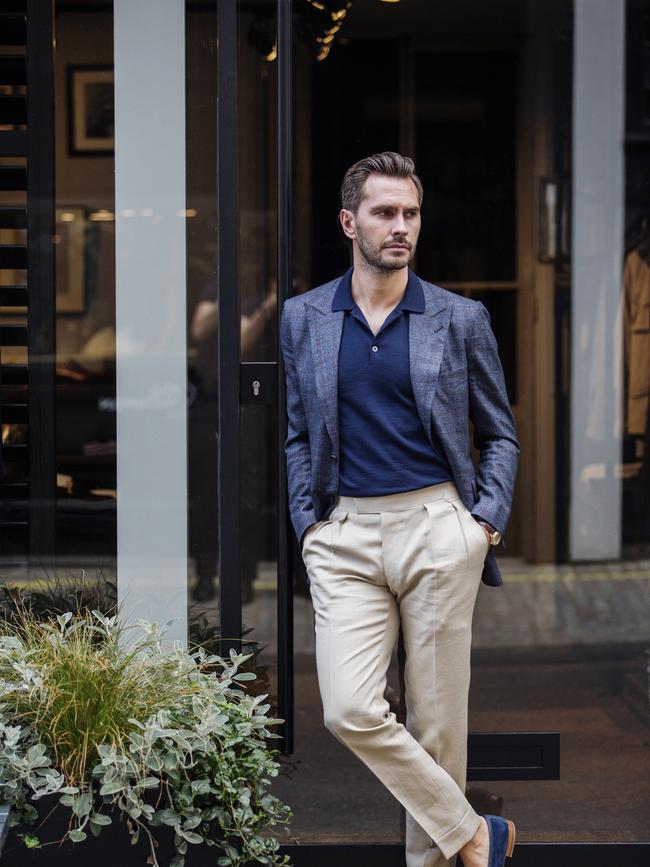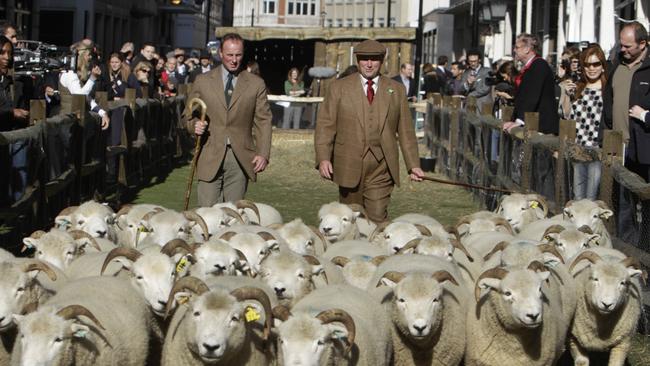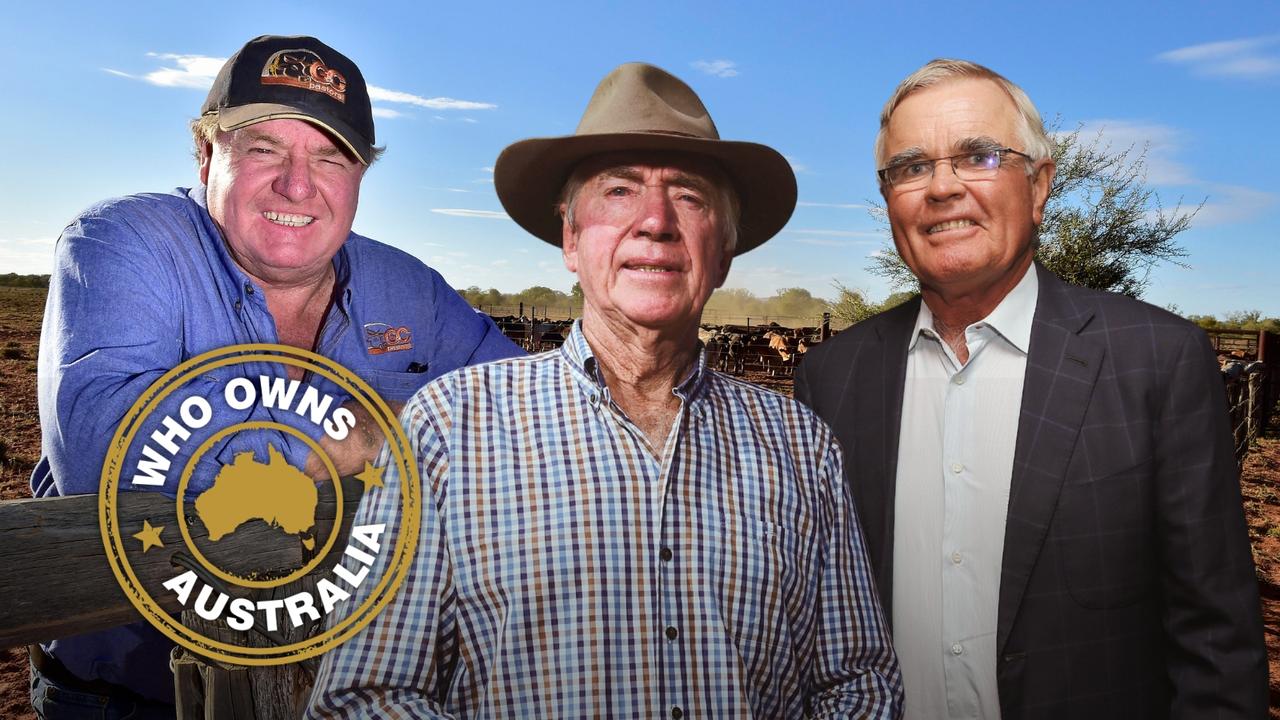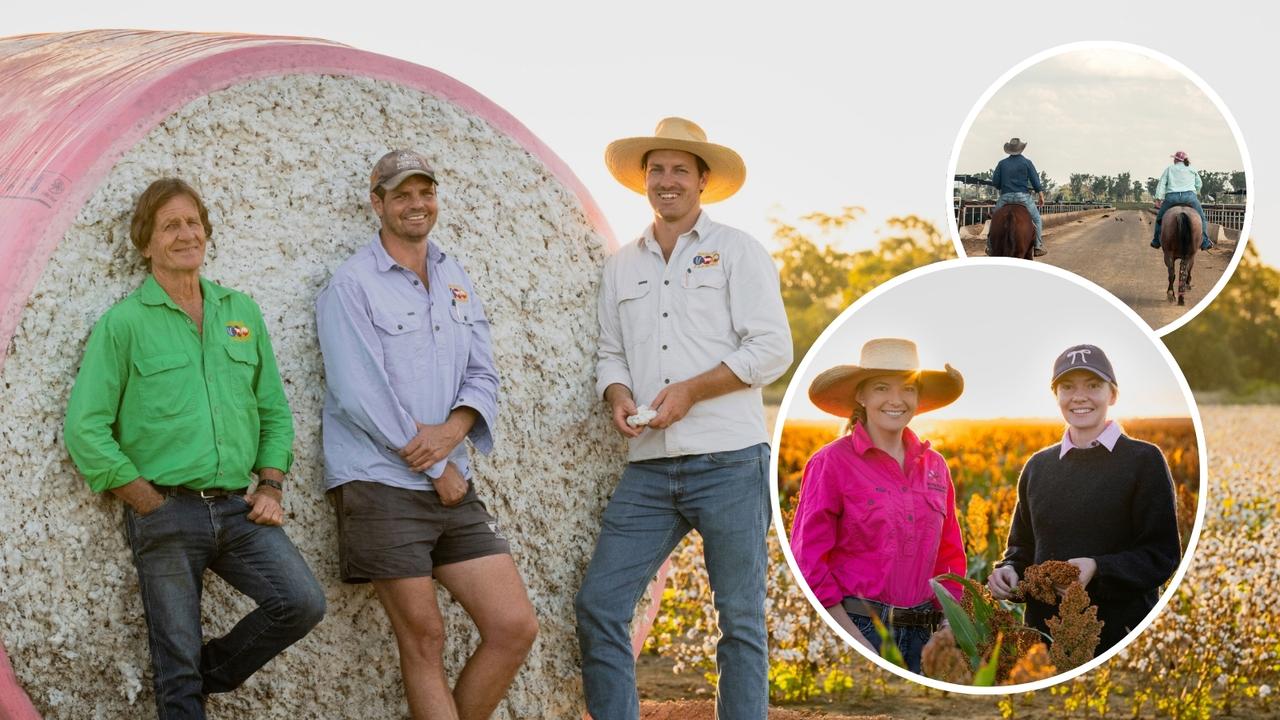Aussie Merino still fibre of choice on Savile Row
With a century-long history supplying London’s high-end suit makers, Australian wool growers are still considered the best in the business by the world’s finest tailors.

LONDON’S Savile Row is renowned for tailoring suits for world leaders, captains of industry and globetrotting celebrities.
What is less well known is the vast majority of the fabric used in the jackets and trousers produced on the famed thoroughfare is made with Australian wool.
Acclaimed brands such as Gieves & Hawkes, Huntsman and Henry Poole & Co champion their ‘Made in England’ credentials but also promote the Australian provenance of their raw material.
“Australian Merino wool excels in providing the key elements for (suiting material) — it breathes, it can be woven to a very high standard,” Henry Poole managing director Simon Cundey says. “Australian wool weaves through Savile Row and has done for generations.”
Cundey should know. Located at 15 Savile Row, his bespoke tailoring business, Henry Poole & Co, has clothed the British aristocracy for two centuries and has the distinction of creating the modern dinner jacket.

While there’s some trans-Atlantic rivalry to that claim (Americans boast the evening suit design emanates from New York State’s Tuxedo Park — hence the name), Henry Poole provides more than enough documentary evidence to argue the case.
In its archive, hundreds of the great and good have their suiting specifications noted — from the finery worn by crown heads of Europe to the wartime attire of Winston Churchill.
“History, a legacy of quality tailoring, is one of Savile Row’s attractions to many customers,” Cundey says. “Customers are more interested in the origins of the fabric, the production process, than they were 10 or 20 years ago.
“Those that have taken the time to research fabric know that Australian wool is of the highest quality, that it’s durable, drapes well. It has staying power.”
In light of this evolving consumer trend, the link between Australian shearing sheds and the bespoke tailoring houses in Mayfair is gaining prominence.
And one of those leading the charge in the provenance push is arguably the world’s most famous wearer of double-breasted suits — the Prince of Wales.
Prince Charles established the Campaign for Wool more than a decade ago to highlight the sustainability of the natural fibre.

During that time, the heir to the throne has made the short trip to his London tailor Anderson & Sheppard as well as the longer journey to Tasmania to meet with Australian wool growers.
“The primary aim of the Campaign for Wool is to increase the demand for wool by explaining its many benefits,” the Prince said in a 2019 speech.
“Quite simply, we have managed to forget what a wonderful fibre it is. Because wool grows naturally, it has a natural cell structure, which enables it to adapt to its environment. Wool absorbs moisture and releases it later, which helps regulate the humidity in a room.”
While the royal campaign has been welcomed by industry figures both in Australia and the UK, there’s a long way to go to change the habits of shoppers — whether they’re buying a jacket in London’s Oxford St or Melbourne’s Collins St.
Australian Wool Innovation consultant Peter Ackroyd, a UK native, notes that his homeland imports 94 per cent of its clothing, with most from Asian countries. “The same figure applies to Germany and the US,” Ackroyd says.
So does Brexit change the equation? The days of direct trading between Australian farm and factory to the British high street in the 1950s and ’60s were cut almost overnight by the UK’s entry into what was then known as the European Economic Community in 1973.
In its place came a maze of indirect links — usually through the eurozone — meaning the UK-Australia wool trade has become less clear in the post-Brexit era.
“While reasonable quantities of top-quality Australian greasy wool are exported to the UK for conversion into yarn and fabric for the world’s finest luxury clothing brands, many spinners and weavers import scoured wool, combed tops and worsted spun yarns from a variety of countries,” Ackroyd says.
In the ’50s and ’60s, Australian-manufactured garments made a pretty simple journey — straight to the British high street. Now, the export expedition is complex, with Ackroyd listing China, Vietnam, India, Mauritius and Indonesia outside the European Union and Bulgaria, Italy, Portugal and Poland within the EU as nations where Australian wool is converted from raw material into manufactured cloth.
Yarn from outside the EU attracts an import duty of just under 5 per cent. A pre-Christmas deal between the UK and EU allayed fears from British premium weavers that with a no-deal Brexit, yarn imported from the EU would be subject to the same duty. “However, UK weavers sourcing worsted yarn from outside the EU will face country-of-origin barriers on finished fabrics exported to the EU,” Ackroyd says.
Australian Merino fabrics woven and finished in Yorkshire are particularly sought after by leading fashion brands in the UK, Italy, France, Japan, the US and increasingly China. ‘Made in England’ is seen as a unique quality assurance for premium priced products.
How the Australian wool industry will benefit from a UK-Australia free-trade deal remains an open-ended question.
Canberra and London are tight-lipped as to any deal, which is expected in coming months.
Independent Savile Row tailor Richard Anderson sees the commercial potential of the new deal outside the EU. Director Brian Lishak says the break from the eurozone would rekindle interest in his home country’s locally sourced clothing. “Almost all the wool suitings we use are sourced from Australia because they are the finest,” Lishak says. “I believe our departure from the EU will be beneficial to us, and the UK-Australia free-trade deal will be important in our buying and selling internationally.”
MORE
AUSTRALIA’S TOP 50 ASX-LISTED AGRIBUSINESSES OF 2021



